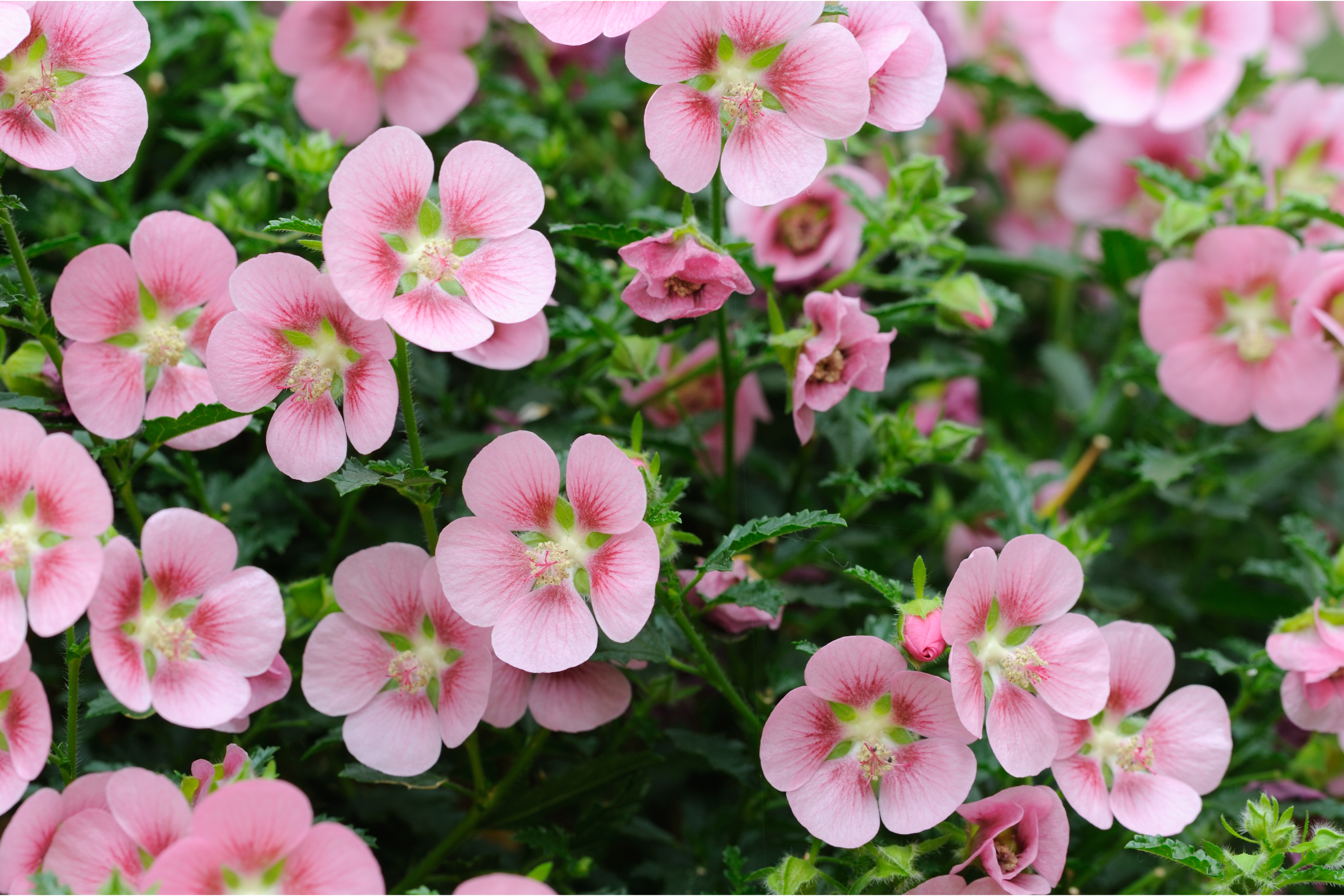African mallow
(Anisodontea capensis)

Description
Anisodontea capensis, known as African mallow, dwarf hibiscus, Cape mallow and false mallow, is a species in the tribe Malveae in the family Malvaceae that is native to South Africa. It has gained the Royal Horticultural Society's Award of Garden Merit as an ornamental. It is an upright, dense subshrub that grows 1m to 1.5m tall and 90cm wide, and is found at altitudes of 670 to 2167 meters. It features green, hairy branches 2mm in length that age to brownish grey. Leaves are simple and ovate, palmately veined and three-lobed, 1mm in length. It has a woody base, so it is not a true herbaceous plant. During a cold spell, it may lose some of its leaves. From late winter or early spring to the first frost, it would display fuchsia, mauve or pink flowers with red centres that are borne in clusters with 5 petals, 1mm in diameter, resembling a hibiscus. The plant does well in Mediterranean style gardens, in containers and as a hedge. They thrive in well-drained soils with organic matter and must be watered regularly during hot and dry spells. Some light pruning is encouraged to promote bushy and compact growth. It can be propagated from tip cuttings done in the summer, and as well by seed (which should be sown on the surface). It can bloom all year long provided it is protected from frost. Anisodontea is a genus of flowering plants in the tribe Malveae of the mallow family Malvaceae. It comprises twenty-one species native to South Africa. Members of the genus typically bear toothed leaves with three or five palmate, uneven lobes. Members of the genus also typically bear flowers with a pubescent calyx, a five-petaled corolla streaked from the center and pink to magenta in color, and stamens with anthers of a dark color. Members of the genus are classed as half-hardy. They thrive in cool-temperate climates and are used as summer bedding and in mild coastal areas where they may be grown as border plants. For several species, the seeds should be sown in spring. Half-harden cuttings should be taken in summer but need bottom heat. They do best in loam-based gritty compost and positioned in full sun.
Taxonomic tree:







